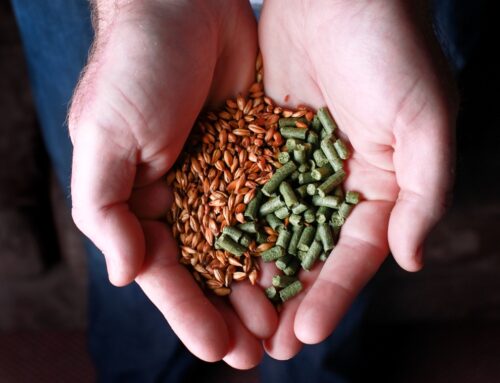Ever cracked a beer and it just didn’t taste right?
Beer freshness has a huge impact on flavour and aroma —
and unlike for wine and spirits, older does not always equal better.
The Importance of Freshness in Beer: Why It Matters
When it comes to enjoying a great beer, freshness is one of the most important factors to consider. Unlike wines or spirits that may improve with age, most beers are at their best when consumed fresh. Freshness impacts the flavour, aroma, and overall quality of beer — so whether you’re a casual beer drinker or a seasoned connoisseur, understanding why freshness matters will enhance your appreciation of our favourite beverage.
Freshness and Flavor: Protecting Beer’s Aroma and Taste
Beer is carefully crafted from a blend of malt, hops, yeast, and water. Each element plays a key role in shaping the unique flavours and aromas associated with various beer styles. However, as beer ages, these ingredients start to degrade — leading to changes in taste and aroma.
As an example, let’s look at hops. Hops provide bitterness and a range of aromas from citrus to pine. Over time, the bright hop notes that define styles like IPAs can fade – leaving the beer to taste flat or stale. So, with beers that are particularly hop-forward or “hoppy”, freshness is especially crucial in maintaining the intended flavour profile — ensuring the hops remain vibrant and aromatic.
The Danger of Oxidation: Why Oxygen is the Enemy
One of the biggest threats to beer freshness is oxidation. In our previous post, we touched on how the measurement of dissolved oxygen prior to packaging is part of the quality assurance checks (as it affects shelf life). Even small amounts of oxygen exposure can have a noticeable effect on the taste, leading to a stale or “off” taste. This oxidation process is often sped up by factors like exposure to light or heat, further compromising the beer’s quality. This is why proper storage — i.e. keeping beer away from light and heat — is so important to preserving its freshness and taste.
Beer Styles and Shelf Life: Knowing When to Drink Your Beer
Some beer styles — such as stouts and Belgian ales — can develop interesting new flavours with age. However, the majority of beers are best consumed sooner rather than later. Particularly for lighter styles such as IPAs or pale ales, there is a relatively short “peak drinking” window. As an example – IPAs are generally at their best within the first 30 to 60 days after packaging. Beyond this, the beer starts to lose its crispness and the complexity IPAs are known for — ultimately resulting in a less enjoyable drinking experience.
Brewers often include dates on packaging to guide consumers on when to enjoy the beer at its freshest. Drinking within this window ensures you’re experiencing the beer exactly as the brewer intended.
The Importance of Proper Handling
Depending on whether the beer is packaged into bottles or cans, or straight into a keg for tap dispensing — maintaining beer freshness isn’t just the responsiblity of the brewer, but also distributors and retailers (and you, as a consumer). Beer must be stored properly throughout its entire journey — whether that be a short journey from the brewery to beer tap, or a long journey from the brewery to your fridge. Keeping beer at the right temperature, avoiding exposure to light, and rotating stock regularly are all part of this process to maintain beer quality.
Fresher Beer = Better Drinking Experience
In the world of beer, freshness is everything. It ensures that flavours and aromas crafted by the brewer are delivered exactly as intended, providing the best drinking experience possible. From avoiding the negative effects of oxidation to maintaining hop vibrancy, keeping beer fresh is vital for both brewers and beer enthusiasts.
So, the next time you crack open a beer — remember that the fresher, the better!









